Kalanchoe Kalandiva is an ornamental indoor plant. It is not at all demanding in care, so even inexperienced flower growers can grow it. The plant forms a compact bush with thick stems and dense fleshy leaves of dark green color. The bush begins to bloom in the middle of winter and blooms for a long time, plentifully for 6 months, after which there comes a period of dormancy.
Material Content:
Basic requirements for the cultivation of Kalanchoe Kalandiva
This plant is ideal for growing indoors. The flower is not picky about air temperature. It can grow well at any temperature from +14 to +30 degrees, tolerates dry air well, so you can not even spray it. But high humidity combined with heat can lead to illness and death of the plant. In winter and autumn, the temperature can be lowered to + 13ºС.

The only mandatory requirement is the abundance of light during the laying of the buds. If you do not pay attention to this, flowering will be sparse.
Also, the plant does not like drafts. Sudden gusts of cold wind can cause gray mold.
Home Care
If you follow the simple agrotechnical rules for the care of Kalanchoe, then it will delight the owner for many years with abundant flowering and lush green foliage.
Ground and pot requirements
You need to grow Kalanchoe Kalandiva mini in small flower pots. The capacity should not be very large, because then the plant tends to fill the roots of the whole earth in a flowerpot and does not bloom well.

It is better to immediately purchase a special soil mixture for succulents, as in transport store pots peat with coconut fiber is mainly covered. You can make the soil mixture yourself from coarse sand, garden soil, humus and crumb brick.
Watering, fertilizing and fertilizing
Kalanchoe should be watered only with filtered and settled water, making sure that moisture does not get on the leaves, as they can rot. After watering, it is advisable to pour excess water from the pan and wipe it dry. Since this plant is considered a succulent, it tolerates a lack of moisture much better than its excess.
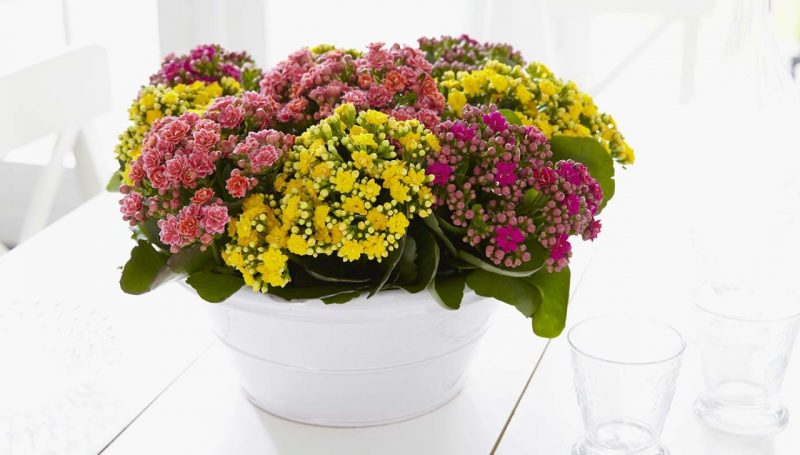
Features of watering depending on the season:
- in the summer - approximately once every 5 days;
- in winter - not more than 1 time in 10 - 12 days.
Fertilize the bush only during the laying of flower buds, about 1 to 2 times a month. In autumn, it is best to use special fertilizers for succulents and cacti, and immediately before flowering - compositions for flowering plants. In no case can you overfeed the plant - it will build up green mass, and will not bloom.
Location, lighting and humidity
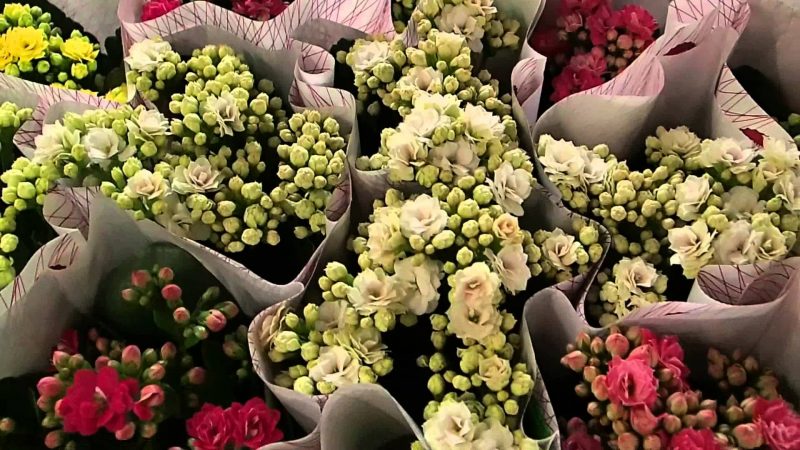
The plant feels best in a well-lit room, but can grow in light partial shade. In strong shade and brightly lit places the flower does not grow well. Scorching sunlight can cause burns. Therefore, if the flower stands on a sunny windowsill, it must be shaded at noon.
It is interesting:care for Hamedorea
Flowering and pruning Kalanchoe
Often you can hear complaints that the plant does not want to bloom anymore at first. This is because the owners do not know what conditions are needed to repeat this beautiful phenomenon. After the plant has bloomed, it is necessary to artificially create a short daylight - no more than 10 hours, taking into account electric lighting. Therefore, after 9 o’clock in the evening, the plant must be covered with a box or bucket or put in a cabinet. As soon as the first peduncles appear, such “manipulations” must be stopped.
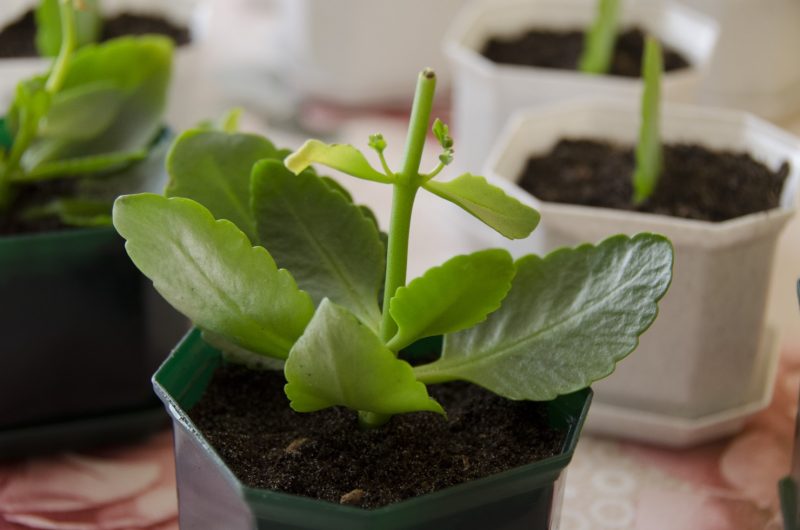
But in some cases, excessive feeding may be the cause of the lack of flowering.
Kalanchoe Kalandiva mix looks very impressive, in which the flowers have different colors. To make the plant look attractive, flower growers recommend timely removal of wilted inflorescences.
After flowering, all peduncles need to be cut, and pinch the shoots. An old plant can be easily rejuvenated by cutting it “on a stump”. The new bush will grow compact, strong and healthy.
Transplant at home
Kalanchoe is not a plant that requires frequent transplantation, as it grows rather slowly. It can be transplanted shortly after acquisition and only in cases of illness or infection with pests.
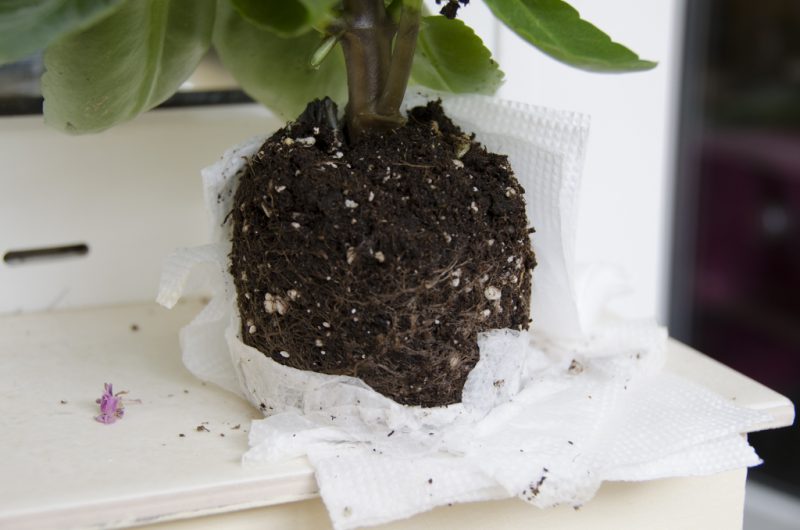
A transplant after a purchase should not be carried out immediately, since the plant must at least slightly adapt to new conditions. Also, do not transplant the bush during flowering, as all buds may fall due to stress. Therefore, the best time to transplant is when the flowering is over and all the flower stalks are cut.
Kalanchoe is a fragile flower, so you need to handle it carefully, being careful not to damage the stems.
When transplanting, you need to carefully inspect the roots and stems for rot and mold. Sick areas need to be removed, and sections to process with the crushed coal.
- The new pot should be a couple of centimeters larger than the previous one.
- If the pot is very large, it is better to plant several plants in it at once so that the earth does not empty.
- Before transplanting, the plant needs to be well watered so that it can be easily removed from the old pot with an earthen lump.
- In a new pot, it is necessary to make a drainage, then plant a plant, cover it with a substrate and mulch it with pebbles or wood chips.
Features of breeding Kalanchoe Kalandiva
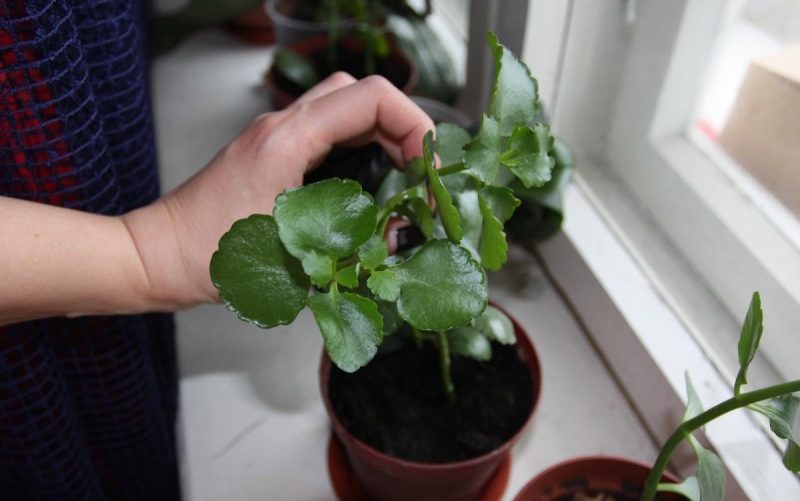
There are several ways to propagate a flower:
- seeds;
- cuttings.
- by the kids.
Reproduction by miniature children that appear on the tips of the leaves is considered the easiest. But not all varieties of Kalanchoe have them, so flower growers most often propagate the plant by cuttings.
This is a fairly simple and quick way. To do this, around the beginning of summer, you need to break off a leaf from a plant or cut a young stalk, plant it in a moist substrate (sand, peat) and cover it with a jar or a glass. Soon he will start up the roots.
Reproduction by seeds is considered the most time-consuming, so it is rarely used. In March, the seeds are sown in prepared boxes, not falling asleep with the ground, but only lightly crushing them with your finger. On top of the boxes you need to cover with glass or film and shade with paper from sunlight. Before seedlings appear, the glass or film must be periodically lifted for ventilation. After germination, the glass is completely removed. When small bushes form, they can be transplanted.
Pests, diseases and treatments
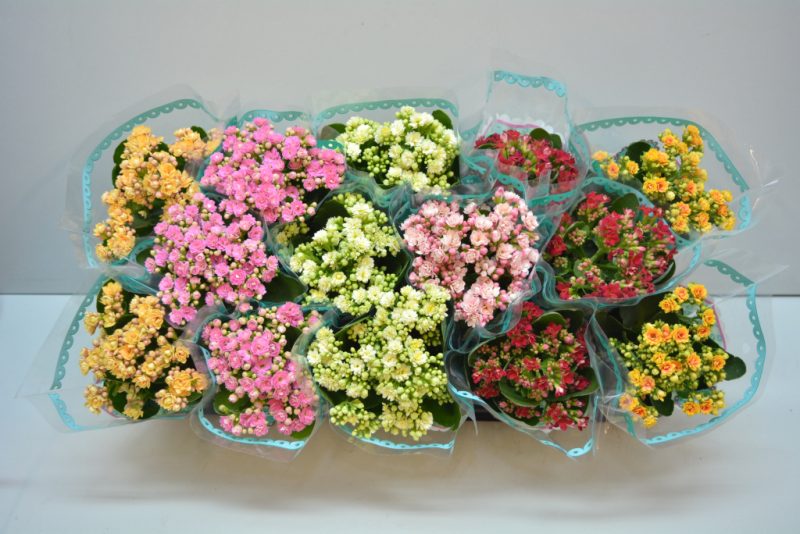
Improper care can often lead to various diseases:
- Excessive watering is a direct way to rot.
- Too sparse watering poorly affects the condition of the leaves. They become covered with brown spots and begin to fall.
- Lack of lighting leads to leaf falling or yellowing.
- Incorrect watering and too low a temperature create optimal conditions for the defeat of the fungus.
Sometimes spots on the leaves may indicate a bacterial or viral infection. In such cases, you need to quickly create the most comfortable conditions for the plant. In case of disease, the flower must be cut and transplanted into new soil.
Pests, with the exception of aphids, rarely attack Kalanchoe. If aphid appears on the flower, it must be sprayed with an insecticide.
Kalanchoe - unpretentious plant. However, he also needs to create optimal conditions: moderate watering and compliance with the light regime. Then he will thank his owners with lush and long flowering.












